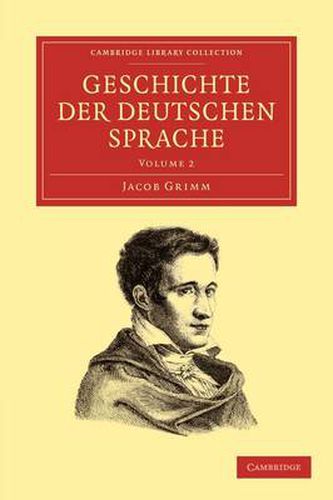Readings Newsletter
Become a Readings Member to make your shopping experience even easier.
Sign in or sign up for free!
You’re not far away from qualifying for FREE standard shipping within Australia
You’ve qualified for FREE standard shipping within Australia
The cart is loading…






Jacob Grimm (1785-1863) became a household name around the world through the collections of fairy tales he compiled with his brother Wilhelm. Jacob’s specialism was the history of the German language, which he studied in the broader context of Indo-European philology. Others working in this burgeoning field included the older scholar Rasmus Rask and Grimm’s contemporary Franz Bopp (also published in this series). Grimm’s two-volume Geschichte der deutschen Sprache, reissued here, was first published in 1848. It is noteworthy especially for the chapter on the major sound shift now known as Grimm’s Law or die erste deutsche Lautverschiebung, which sets out regular mappings between Germanic consonants and those found in earlier Indo-European languages, such as English father and Latin pater. The book also contains a wealth of comparative material on phonology, vocabulary and grammar within Germanic and across the Indo-European spectrum.
$9.00 standard shipping within Australia
FREE standard shipping within Australia for orders over $100.00
Express & International shipping calculated at checkout
Jacob Grimm (1785-1863) became a household name around the world through the collections of fairy tales he compiled with his brother Wilhelm. Jacob’s specialism was the history of the German language, which he studied in the broader context of Indo-European philology. Others working in this burgeoning field included the older scholar Rasmus Rask and Grimm’s contemporary Franz Bopp (also published in this series). Grimm’s two-volume Geschichte der deutschen Sprache, reissued here, was first published in 1848. It is noteworthy especially for the chapter on the major sound shift now known as Grimm’s Law or die erste deutsche Lautverschiebung, which sets out regular mappings between Germanic consonants and those found in earlier Indo-European languages, such as English father and Latin pater. The book also contains a wealth of comparative material on phonology, vocabulary and grammar within Germanic and across the Indo-European spectrum.